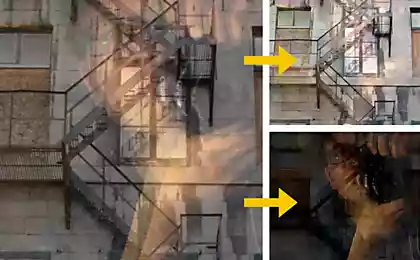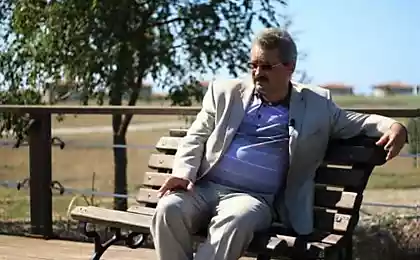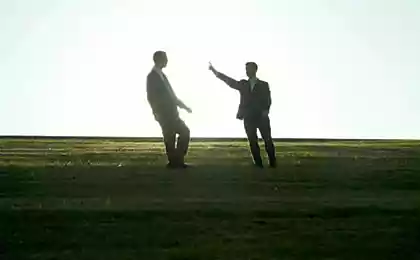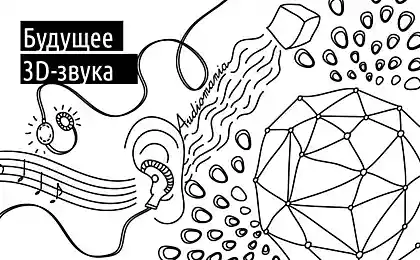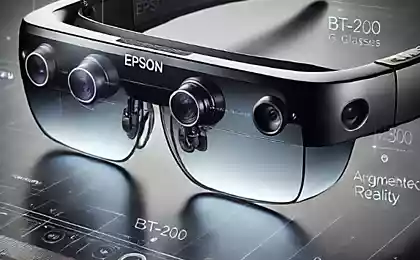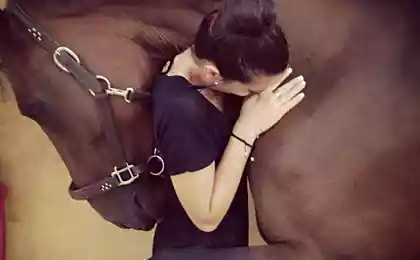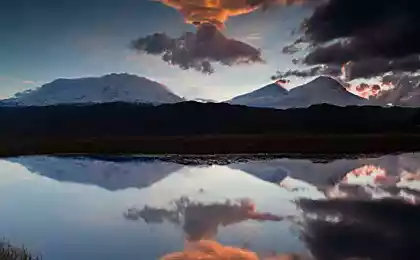466
Savely Kashnitsky: 16 ways of representing reality
The kashnitsky S. E., Preface to the book by Tatiana Menshovoj "Theatre of socionics"
The book, which was opened by the reader, noteworthy is the fact that is a hefty puzzle for the bibliographer. Which section of knowledge to take her? Where to find her place in the code system of categorization? Simply put what shelf to put it on? You can take it to the literature of psychology – after all, there are 16 different, complementary ways of representing reality.

With equal reason it can be considered a book on popular linguistics: mapped 16 variants of the language system in one of the Russian language. And if I say that this humanitarian transformation of the principles of Cybernetics, also can't go wrong. In the modern school curriculum has taken its place Informatics is a young emerging and very popular science, without which it can hardly master of computer Arsenal of civilization. So, we can rightfully say that the art in front of us benefit Informatics that without paragraphs and formulas, without didactic stiffness, gently invites the reader to understand imagery and semantic structure of language. Finally, will not err who recognize in this book the new edition of information psychoanalysis (socionics) – new, under formation of knowledge, set himself an ambitious task to organize ideas about the information structure of the human psyche and, what is especially unusual system of communication links between people.
Socionics was born in the 60-ies of the last century, in the last days of thaw. Then liberated the thinking of the romantic era of quantum physics and genetics have revived a hope friends the triumph of social justice, future creation of artificial intelligence, the complete victory of enlightened materialism over the shame of religious consciousness. The first infant veclici of socionics is in tune with the naive babbling of those "physicists" who with a crushing score defeated "lyrics".
But at the same time, socionics became a natural philosophical product of the stage of development of the knowledge, when the old paradigm of natural science could no longer satisfy people who think in new ways. Fundamental discoveries in physics and biology, the first space flight raised new questions about the structure of the Universe and the relativity postulates of materialistic science.
Pierre Teilhard de Chardin and Vladimir Vernadsky's doctrine about the noosphere – mudplaning space integral mind creatively developed the idea of the neo-Platonist Plotinus on the world Mind and world Soul, that man is able to transcend the soul to the sphere of Reason. Teilhard de Chardin perceptively foresaw the further evolution of man not as an individual unit, but as the representative of the United communities.
Henri Bergson convinced, it seems, all that is unthinkable without intuition further comprehension of life, and intuition he was represented as a four-dimensional cube, made of matter, consciousness, memory and spirit. I do not like this quaternion to the one that led Carl Gustav Jung, observing his patients, thinking, emotions, intuition, feelings? Describing composite modules of this quaternion and calling them psychological types, Jung anticipated the achievements of modern physics describing the electron as a cloud of probability of the location of the elementary particles. On such probabilistic models of language later wrote an outstanding philosopher, mathematician and linguist Vasily Nalimov. It took to bring these intuitions to describe the socion – tetracaine psychotypical of its constituent modules. They also observed probability distribution of "information clouds" – language and etiological substrates of the generalized psycho-social model of personality.
Around those same years, scientist and semiotician Yuri Lotman wrote that artificial intelligence, in which the search was thrown the best minds of his time, has two implemented in society models – culture in General and language as a single fractal culture. These insights are brilliantly correlated with the idea of the Englishman William Clifford on the matter as the manifestation of clots and exhaustion of the emptiness of matter as the curvature of space and time.
Compatriot and intellectual follower of Clifford physicist Roger Penrose proves that the reception of new truths in our time, exclusively through the logical mind is impossible, you need a direct connection of consciousness to the original source of knowledge. In parallel to Penrose, two Russian physicist Anatoly Akimov and Gennady Shipov, feel free to go beyond mainstream science, claim that the picture of the world without including in it consciousness is one-sided and incomplete, as a fundamental principle of the mother can not be solely physical element, not directed by the overmind. So it was formulated the concept of the physical vacuum – immaterial of matter, having a field, information structure.
The curvature of space lead to the formation of the physical vacuum of the vortex – probabilistic distributed "germ" of elementary particles, the initial "building blocks" of matter. In these pioneering studies postanesthesia physics, together with Cybernetics, and Informatics, in a new turn of the spiral of knowledge has justified atomistic speculation of Democritus and the "classical theory of relativity" of Heraclitus, in which the movement is made up of fractals of rest.
Finally, the birth of socionics we owe the fact that in the second half of the last century began a intuitive attempts of synthesis of inductive, "Western" method of knowledge with deductive, "East". It became obvious: the study of single phenomena, followed by synthesis of experience, which is characteristic of the thinking of the West, is limited to the atheistic isolation of science from the bottomless resources of the Superconscious. But enriched by the experience of the East, with its meditative connection of consciousness to the "United Bank" data, science will be able to combine their ideas about living and nonliving matter in a single picture. These principles formed the basis of cognitive Psychophysics – integrated knowledge, developing Biofizika Alexander DuBrow -- as the leading scientific discipline of the XXI century. That's what a power the streams of consciousness were born socionics, boldly claiming to be the science of Sciences.
In recent years books on socionics a lot. Perhaps too much for the field of knowledge, only to scuttle out of the dark primordial chaos into the light of scientific truth. You can get acquainted with the "socionics in portraits", with "socionics in the examples," learn "the lessons of socionics" or to stray in the labyrinth of "socionics small groups"*. Published books written by different authors on language of logic, but has flashes of intuitive insights.
This one-sidedness is best recognised by socionics, a long time to understand that, in addition to intuitive-logical, there are three language models covering a variety of information from the remaining three sides of our four-dimensional space (after birth two centuries ago, Lobachevski geometry to insist on the three-dimensional would be naive). But to implement intuitive-ethical, sensory-logical and sensory-ethical models, specialists in information psychoanalysis due to the inertia of thinking has not come yet. This book opens the door "adjacent", the intuitive-ethical of the room, still unsettled, frighteningly empty, but irresistibly alluring.
About ethical science were described by albert Einstein, who feared science as one-sided logic of force, is able to easily give your findings to the devil of violence and destruction. Only ethical science, considered a brilliant thinker, will not allow you to use it for evil, humanity against the powerful achievements of the intellect. But how to match the cold logic of knowledge and creativity with a warm protective blanket of ethics – it does not even know Einstein. Of course, socionics does not give ready-made recipes in such a difficult task. But she is capable of preparing humanity to a multi-vector thinking – to start at least with awareness of the diversity of linguistic structures.
This non trivial task is the best real book, offering 16 is the dimension of intellectual and emotional awareness of reality those conventional psycho, the reality of which, while still in vosmiletnem version, anticipated Jung, and character-a formula described by Aushra Augustinavichute, the Creator of socionics.
However, the reader may not be familiar with socionics. Or, knowing her, distracted and relaxed, just look at the world through a certain 16-facet prism, delighting themselves kaleidoscopic multiplicity openwork split reality clearly associated fractals. Imagine that you are invited into the company of friends. Conversing with each in turn, you will hear the stories, as if not associated with one another, but on a subconscious level so complementary that surely will feel the beauty of harmony.
You try to loosen up and relax in this cozy company, and will leave enriched and peaceful, learning about the world, something that could not tell less than sixteen ways. If from the book the reader will make at least an impression that the world has "2 degree n" of the ways in different ways to inform about the same, it will be an excellent illustration of pluralistically consciousness, unobtrusive lesson in democracy that is not enough for our prone to extremes is not always a cosy world.published
Author: E. S. Kashnitsky, the Foreword to the book by Tatiana Menshovoj "Theatre of socionics"
P. S. And remember, just changing your mind — together we change the world! ©
Source: socionics.wiki-wiki.ru/socionics-wiki/index.php/%D0%9A%D0%B0%D1%88%D0%BD%D0%B8%D1%86%D0%BA%D0%B8%D0%B9_%D0%A1.%D0%95._%D0%9F%D1%80%D0%B5%D0%B4%D0%B8%D1%81%D0%BB%D0%BE%D0%B2%D0%B8%D0%B5_%D0%BA_%D0%BA%D0%BD%D0%B8%D0%B3%D0%B5_%D0%A2%D0%B0%D1%82%D1%8C%
The book, which was opened by the reader, noteworthy is the fact that is a hefty puzzle for the bibliographer. Which section of knowledge to take her? Where to find her place in the code system of categorization? Simply put what shelf to put it on? You can take it to the literature of psychology – after all, there are 16 different, complementary ways of representing reality.

With equal reason it can be considered a book on popular linguistics: mapped 16 variants of the language system in one of the Russian language. And if I say that this humanitarian transformation of the principles of Cybernetics, also can't go wrong. In the modern school curriculum has taken its place Informatics is a young emerging and very popular science, without which it can hardly master of computer Arsenal of civilization. So, we can rightfully say that the art in front of us benefit Informatics that without paragraphs and formulas, without didactic stiffness, gently invites the reader to understand imagery and semantic structure of language. Finally, will not err who recognize in this book the new edition of information psychoanalysis (socionics) – new, under formation of knowledge, set himself an ambitious task to organize ideas about the information structure of the human psyche and, what is especially unusual system of communication links between people.
Socionics was born in the 60-ies of the last century, in the last days of thaw. Then liberated the thinking of the romantic era of quantum physics and genetics have revived a hope friends the triumph of social justice, future creation of artificial intelligence, the complete victory of enlightened materialism over the shame of religious consciousness. The first infant veclici of socionics is in tune with the naive babbling of those "physicists" who with a crushing score defeated "lyrics".
But at the same time, socionics became a natural philosophical product of the stage of development of the knowledge, when the old paradigm of natural science could no longer satisfy people who think in new ways. Fundamental discoveries in physics and biology, the first space flight raised new questions about the structure of the Universe and the relativity postulates of materialistic science.
Pierre Teilhard de Chardin and Vladimir Vernadsky's doctrine about the noosphere – mudplaning space integral mind creatively developed the idea of the neo-Platonist Plotinus on the world Mind and world Soul, that man is able to transcend the soul to the sphere of Reason. Teilhard de Chardin perceptively foresaw the further evolution of man not as an individual unit, but as the representative of the United communities.
Henri Bergson convinced, it seems, all that is unthinkable without intuition further comprehension of life, and intuition he was represented as a four-dimensional cube, made of matter, consciousness, memory and spirit. I do not like this quaternion to the one that led Carl Gustav Jung, observing his patients, thinking, emotions, intuition, feelings? Describing composite modules of this quaternion and calling them psychological types, Jung anticipated the achievements of modern physics describing the electron as a cloud of probability of the location of the elementary particles. On such probabilistic models of language later wrote an outstanding philosopher, mathematician and linguist Vasily Nalimov. It took to bring these intuitions to describe the socion – tetracaine psychotypical of its constituent modules. They also observed probability distribution of "information clouds" – language and etiological substrates of the generalized psycho-social model of personality.
Around those same years, scientist and semiotician Yuri Lotman wrote that artificial intelligence, in which the search was thrown the best minds of his time, has two implemented in society models – culture in General and language as a single fractal culture. These insights are brilliantly correlated with the idea of the Englishman William Clifford on the matter as the manifestation of clots and exhaustion of the emptiness of matter as the curvature of space and time.
Compatriot and intellectual follower of Clifford physicist Roger Penrose proves that the reception of new truths in our time, exclusively through the logical mind is impossible, you need a direct connection of consciousness to the original source of knowledge. In parallel to Penrose, two Russian physicist Anatoly Akimov and Gennady Shipov, feel free to go beyond mainstream science, claim that the picture of the world without including in it consciousness is one-sided and incomplete, as a fundamental principle of the mother can not be solely physical element, not directed by the overmind. So it was formulated the concept of the physical vacuum – immaterial of matter, having a field, information structure.
The curvature of space lead to the formation of the physical vacuum of the vortex – probabilistic distributed "germ" of elementary particles, the initial "building blocks" of matter. In these pioneering studies postanesthesia physics, together with Cybernetics, and Informatics, in a new turn of the spiral of knowledge has justified atomistic speculation of Democritus and the "classical theory of relativity" of Heraclitus, in which the movement is made up of fractals of rest.
Finally, the birth of socionics we owe the fact that in the second half of the last century began a intuitive attempts of synthesis of inductive, "Western" method of knowledge with deductive, "East". It became obvious: the study of single phenomena, followed by synthesis of experience, which is characteristic of the thinking of the West, is limited to the atheistic isolation of science from the bottomless resources of the Superconscious. But enriched by the experience of the East, with its meditative connection of consciousness to the "United Bank" data, science will be able to combine their ideas about living and nonliving matter in a single picture. These principles formed the basis of cognitive Psychophysics – integrated knowledge, developing Biofizika Alexander DuBrow -- as the leading scientific discipline of the XXI century. That's what a power the streams of consciousness were born socionics, boldly claiming to be the science of Sciences.
In recent years books on socionics a lot. Perhaps too much for the field of knowledge, only to scuttle out of the dark primordial chaos into the light of scientific truth. You can get acquainted with the "socionics in portraits", with "socionics in the examples," learn "the lessons of socionics" or to stray in the labyrinth of "socionics small groups"*. Published books written by different authors on language of logic, but has flashes of intuitive insights.
This one-sidedness is best recognised by socionics, a long time to understand that, in addition to intuitive-logical, there are three language models covering a variety of information from the remaining three sides of our four-dimensional space (after birth two centuries ago, Lobachevski geometry to insist on the three-dimensional would be naive). But to implement intuitive-ethical, sensory-logical and sensory-ethical models, specialists in information psychoanalysis due to the inertia of thinking has not come yet. This book opens the door "adjacent", the intuitive-ethical of the room, still unsettled, frighteningly empty, but irresistibly alluring.
About ethical science were described by albert Einstein, who feared science as one-sided logic of force, is able to easily give your findings to the devil of violence and destruction. Only ethical science, considered a brilliant thinker, will not allow you to use it for evil, humanity against the powerful achievements of the intellect. But how to match the cold logic of knowledge and creativity with a warm protective blanket of ethics – it does not even know Einstein. Of course, socionics does not give ready-made recipes in such a difficult task. But she is capable of preparing humanity to a multi-vector thinking – to start at least with awareness of the diversity of linguistic structures.
This non trivial task is the best real book, offering 16 is the dimension of intellectual and emotional awareness of reality those conventional psycho, the reality of which, while still in vosmiletnem version, anticipated Jung, and character-a formula described by Aushra Augustinavichute, the Creator of socionics.
However, the reader may not be familiar with socionics. Or, knowing her, distracted and relaxed, just look at the world through a certain 16-facet prism, delighting themselves kaleidoscopic multiplicity openwork split reality clearly associated fractals. Imagine that you are invited into the company of friends. Conversing with each in turn, you will hear the stories, as if not associated with one another, but on a subconscious level so complementary that surely will feel the beauty of harmony.
You try to loosen up and relax in this cozy company, and will leave enriched and peaceful, learning about the world, something that could not tell less than sixteen ways. If from the book the reader will make at least an impression that the world has "2 degree n" of the ways in different ways to inform about the same, it will be an excellent illustration of pluralistically consciousness, unobtrusive lesson in democracy that is not enough for our prone to extremes is not always a cosy world.published
Author: E. S. Kashnitsky, the Foreword to the book by Tatiana Menshovoj "Theatre of socionics"
P. S. And remember, just changing your mind — together we change the world! ©
Source: socionics.wiki-wiki.ru/socionics-wiki/index.php/%D0%9A%D0%B0%D1%88%D0%BD%D0%B8%D1%86%D0%BA%D0%B8%D0%B9_%D0%A1.%D0%95._%D0%9F%D1%80%D0%B5%D0%B4%D0%B8%D1%81%D0%BB%D0%BE%D0%B2%D0%B8%D0%B5_%D0%BA_%D0%BA%D0%BD%D0%B8%D0%B3%D0%B5_%D0%A2%D0%B0%D1%82%D1%8C%





